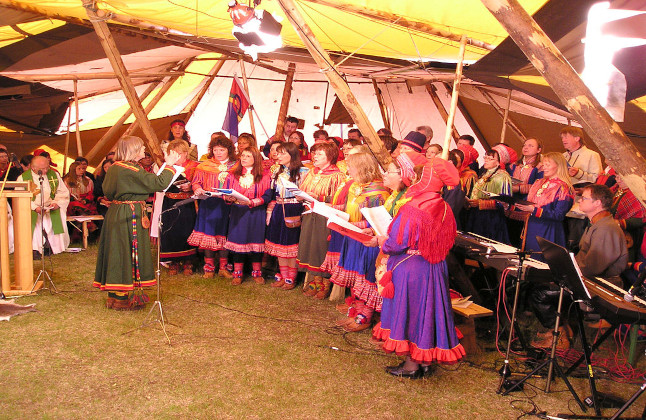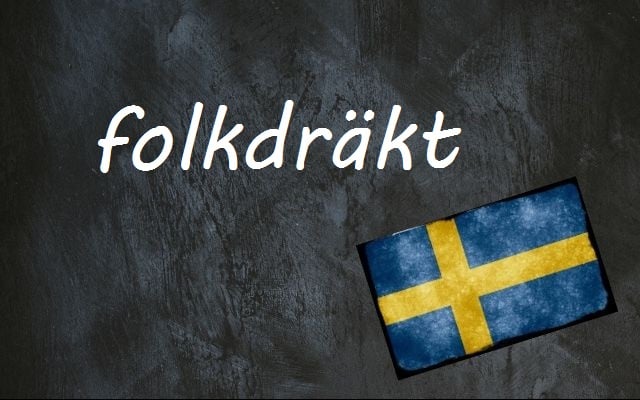The word translates to folk (‘people’, usually in the sense of a nation, for example det svenska folket – the Swedish people) + dräkt (costume).
While dancing around the maypole on Midsummer, some Swedes will choose to wear a traditional folk costume.
There are hundreds of different kinds of Swedish folkdräkter, and they vary between Sweden’s different regions; you will also hear them called landskapsdräkter (regional costume) or hembygdsdräkt (homeland costume). Dalarna in the middle of Sweden has the most types of folkdräkter.
The folkdräkt has been recorded since the 1600s and was worn by the allmogen (peasant class) in preindustrial Sweden according to Skansen. They were used as casual, everyday wear.
They developed at a time when Sweden was an agricultural nation; in such a big country, rural communities were spread out and local identity was strong, so there was a focus on conformity which is how local towns developed their own costume designs.
The national folkdräkt was created in the early 20th century to encourage national cohesion, and is yellow and blue to match the Swedish flag. The folkdräkt is often seen on national Swedish holidays such as Midsummer and National Day, by both ordinary people and royals, for example the Crown Princess Victoria who often wears the costume at public events on holidays.

Crown princess Victoria on Sweden’s national day. Photo: Claudio Bresciani / TT
Sweden is not the only country that wears folk costumes for holidays. In Sweden’s neighbour Norway, wearing a folk costume for their independence day May 17th is the norm, and is more common than in Sweden.
The indigenous Sami people in northern Sweden also have folkdräkter which vary by region in the Sami nation Sapmi.
The Samedräkt (Sami costume) includes a garment called either gákti, gábdde, gáppte, gápptie or gapta depending on the region (kolt in Swedish). They are more commonly worn than other Swedish folk costumes, especially at times of celebration such as weddings.

A Sami choir in concert. Photo: Information Service of the Church of Norway/ Wikimedia Commons



 Please whitelist us to continue reading.
Please whitelist us to continue reading.
Member comments